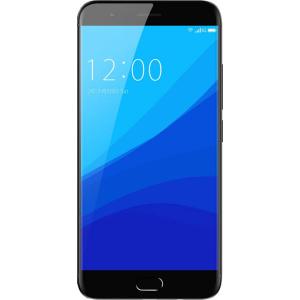Flash firmware on UMiDIGI C2
Mobiles >> UMiDIGI >> UMiDIGI C2| Specifications | Reviews | Secret codes |
| Unlock phone | Root phone |
| Backup | Flash Firmware | Screenshot |
| Hard Reset |
How to flash UMiDIGI C2?
Why reinstall the firmware?
Errors periodically appear in the Android operating system.
Some applications do not open, reinstalling which does not lead to a positive result.
Many programs from the Play Market do not work.
The phone restarts or shuts down by itself.
The phone slows down a lot during operation.
You have decided to try a different version of Android.
Where can I find the firmware?
On the official website of the phone manufacturer.
On sites where developers post custom or official OS.
What should be done before installing the firmware?
Create a backup copy of all personal information: contacts, photos and transfer it to another computer.
Insert your SD card into your phone. It must have enough memory to fit the firmware.
Find out the exact model of your smartphone.
Fully charge your phone battery.
Download archive with Firmware. Place it on the SD card.
Installing TWRP Recovery
Download the Official TWRP App to your phone from the Play Market. And install this app.
At the first start, you need to give consent to future manipulations, as well as consent to granting the Superuser rights to the application. Check the checkboxes and press the 'OK' button.
On the next screen, select 'TWRP FLASH' and give the application root rights.

On the main screen of the application, click on the 'Select Device' drop-down list, and select your phone model.
After selecting a phone, the application will direct the user to a web page to download the modified recovery environment image file. Download the proposed *.img file.
After downloading the image file, return to the main screen of the Official TWRP App and press the 'Select a file to flash' button. Select the file downloaded in the previous step.
Now press the 'FLASH TO RECOVERY' button and confirm your choice, press 'OK'.
The recording process is very fast, and upon completion, the message 'Flash Completed Succsessfuly!' appears. Click 'OK'. The TWRP installation procedure can be considered complete.
Write the firmware to the SD card. Using a PC or laptop card reader.
Insert a SD memory card into the phone.
To reboot into recovery, you need to use a special item in the Official TWRP App menu, accessible by pressing the button with three stripes in the upper left corner of the main screen of the application. Open the menu and select the 'Reboot' item, and then click on the 'REBOOT RECOVERY' button.
Firmware via TWRP

Before flashing, you need to clear the 'Cache' and 'Data' sections, press 'WIPE' on the main screen. This will delete all user data from the device, but avoid a wide range of software errors and other problems.
Press the 'Install' button to start the flashing.

The file selection screen is displayed. At the very top is the 'Storage' button, select the location where the firmware file is located.
Select the location where the files were copied. Press the 'OK' button.

Select the firmware file and click on it. A screen opens with a warning about possible negative consequences, you need to check the item 'Zip signature verification', which will avoid using damaged files during recording.
The procedure for writing files to the device's memory will begin, accompanied by the appearance of inscriptions in the log field and the completion of the progress bar.
After completing the installation procedure, a 'Successful' message appears on the screen.
Summary: Brand: UMIDIGI; Type: 4G Smartphone; Smart Phone OS: Android 7.0; Service Provider: Unlocked; SIM Card Slot: Dual SIM,Dual Standby; SIM Card Type: Dual Nano SIM; CPU: MTK6750T; Cores: 1.5GHz,Cortex-A53,Octa Core; GPU: Mali-T860; RAM: 4GB RAM; ROM: 64GB; External Memory: TF card up to 256GB; Screen type: 2.5D Arc Screen,Capacitive (5-Points),Corning Gorilla Glass 4; Screen size: 5.0 inch; Screen resolution: 1920 x 1080 (FHD); Camera type: Dual cameras (one front one back); Back camera: 13.0MP; Front camera: 5MP; Video recording: Yes; Flashlight: Yes; Music format: AMR,MP3,WAV; Video format: 3GP,MPEG4; I/O Interface: 2 x Nano SIM Slot,3.5mm Audio Out Port,Micro USB Slot; ...
Comments, questions and answers on the flash firmware UMiDIGI C2
Ask a question about UMiDIGI C2




